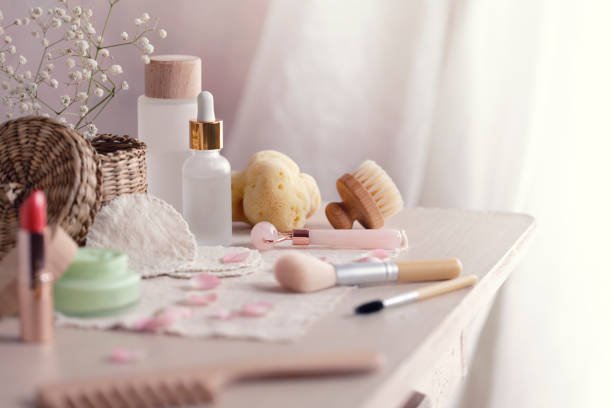Solving Common Plumbing Problems with Innovative New Products
RH Business Marketing Solutions
Imagine a world where your plumbing system knows what you need, as if by magic. Nowadays, plumbing is no longer about repairing leaks and unclogging drains. It is a world of innovative ideas that make life easier, water better, and the environment healthier. From touchless faucets to clever sensors that protect your pipes, this is the time when plumbing and innovation come together excitingly.
Let us look at some groundbreaking innovations and how they can make a difference in your plumbing system.
Touchless Plumbing: Embracing the Future
Touchless plumbing fixtures have rapidly gained popularity for a good reason. These fixtures bring many benefits, including convenience, enhanced control, cost savings, and improved energy efficiency. Touchless fixtures use sensors that detect user presence, eliminating the need for direct touch.
These touchless fixtures are discreetly built into sinks, toilets, and urinal stations—suiting locations experiencing heavy usage, such as public washrooms, medical facilities, and transportation hubs. Within such settings, contactless mechanisms reduce the risk of cross-contamination while helping ensure stringent cleanliness standards. This reassures individuals utilizing the spaces of their well-being when automated operations reduce direct physical contact.
Next-Generation Filtration Systems: Elevating Water Quality
Water treatment systems determine water quality within a building's plumbing system. By effectively removing contaminants and impurities, these systems ensure that the water flowing through our taps is safe for consumption. The installation can occur at entry points or individual fixtures, depending on the property owner's requirements.
These systems offer more than just water safety; they extend the lifespan of plumbing fixtures and appliances by minimizing mineral and sediment buildup in the pipes. Water treatment systems optimize water quality and reduce the need for repairs and replacements, presenting a sustainable approach to plumbing maintenance.
Green Plumbing: Sustainable Solutions for the Future
Green plumbing shines as a symbol of sustainability in a world where people are more aware of how their actions affect the environment. Greywater systems are a part of this movement, reusing water from showers and sinks to help plants grow. This way, water is not wasted but put to beneficial use.
Rainwater harvesting is another way to be eco-friendly. Large barrels connected to hoses collect rainwater, which you can use for cleaning and gardening. This approach is about using water wisely and caring for our planet.
This eco-friendly plumbing approach tackles the worries of water scarcity while reducing unnecessary water use. It emphasizes how innovation and being environmentally friendly can work harmoniously to protect our planet for future generations.
Smart Sensors: Predicting and Preventing Issues
Besides touchless faucets, technology is delving deeper into plumbing with the arrival of smart sensors. These inconspicuous gadgets act like watchful guardians, keeping an eye on every aspect of your plumbing system. They can detect leaks, shifts in humidity, and temperature changes—sending instant alerts to homeowners and plumbers.
Their early detection helps prevent minor issues from turning into expensive repairs. Moreover, these clever sensors can also track how much water flows, empowering people to make informed choices about their water use and conservation efforts. With smart sensors, your plumbing becomes more competent and efficient—making life easier and more efficient.
Pipe Rehabilitation: Reinventing Pipe Repair
Pipe issues can wreak havoc daily, but revolutionary pipe rehabilitation technologies are turning the tide. Methods like trenchless pipe lining, pipe bursting, and cured-in-place pipe (CIPP) lining provide innovative solutions for addressing damaged tubes. These techniques minimize disruptions by eliminating the need for extensive excavations.
Pipe rehabilitation technologies effectively combat leaks, blockages, and corrosion while ensuring minimal disturbance to property and routine. This change highlights how plumbing is improving, focusing on making things simple and dependable.
Access Doors: Sealing the Path to Safety and Accessibility
Access doors, a rising star in plumbing innovation, solve a crucial problem: providing secure and convenient access to hidden spaces. These doors, like the Acudor A-FPS flood-tight floor panel, effectively seal off areas vulnerable to water ingress, gas infiltration, or odor transmission. Imagine a basement prone to flooding or a room with hazardous gases—these access doors act as a barrier, preventing air and moisture from entering the floor.
They make things safer and more accessible for maintenance, allowing quick and effective checks. These doors show how innovative plumbing ideas can solve real problems by being practical and creative at the same time. With their seamless integration into various spaces, access doors embody modern plumbing's commitment to enhancing both convenience and safety for homeowners.
Final Thoughts
These innovative ideas make a significant difference in a world where plumbing is becoming more creative and effortless. From faucets that work without touching to sensors that catch problems early, these new products are changing how we use water in our homes.
Incorporating these innovative plumbing solutions is about fixing problems and making positive changes that enhance your daily life. With touchless faucets, you can prevent the spread of germs effortlessly. Improved filters ensure clean water for better health. Smart sensors save you money and time. Embrace these advancements for a more positive, sustainable, and convenient plumbing experience. Be a part of the future of plumbing and enjoy a better life.
Guest Contributor: Chris Jackson














